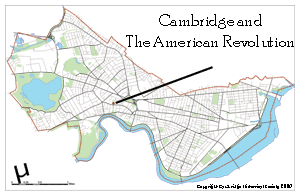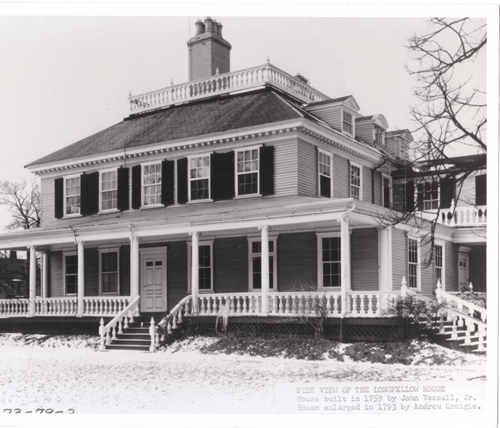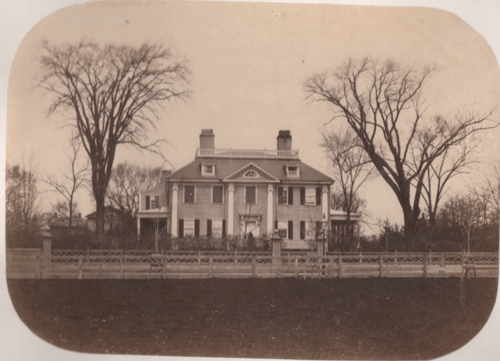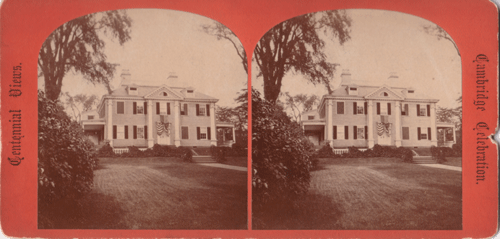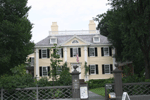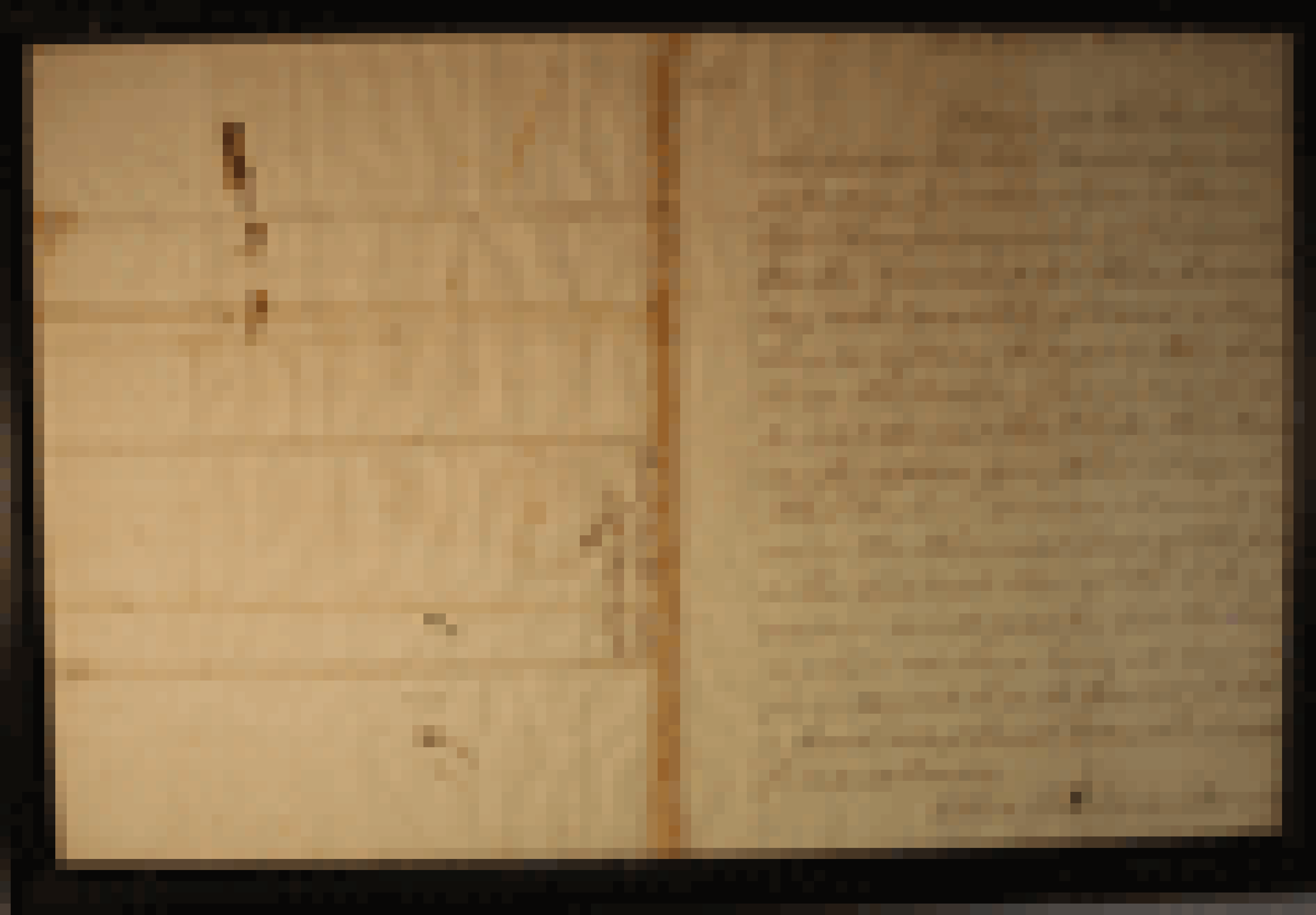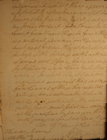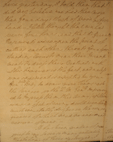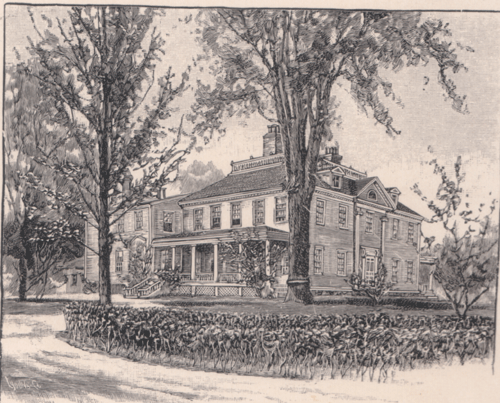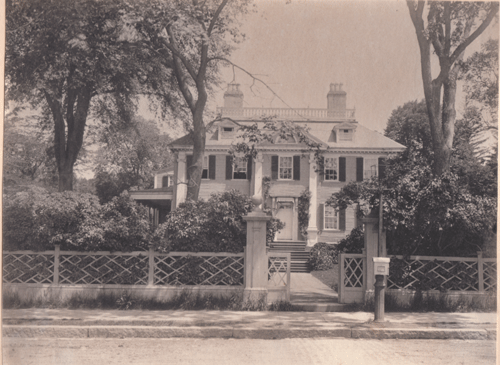Vassall-Craigie-Longfellow House
Once extending from the Harvard University Observatory to the banks of the Charles River, the 107-acre Vassall estate stretched across prime Cambridge real estate. John Vassall Sr. was the brother of Henry Vassall, who built the Vassall House across the street, and married first Elizabeth Phipps and then Lucy Barron. His only son, John Vassall Jr., entered Harvard College in 1753, came of age in 1759, and built this Georgian-style mansion in 1759. In 1761 he married Elizabeth Oliver, sister of Lt. Governor Thomas Oliver. Thomas Oliver married Vassall's sister, Elizabeth, so they were double brothers-in-law.
Following the Powder Alarm of 1774 and the harsh treatment of Lt. Governor Oliver, John Vassall, his wife, 5 sons and 1 daughter feared for their lives and moved into Boston where his youngest son died. He went to Halifax in 1775, and he and Thomas Oliver and their families sailed with the British troops who evacuated Boston to London in 1776. He died in Clifton, England on 2 October, 1797.
Beyond the Vassalls, this property has quartered several famous Americans. In the nineteenth century, it was the home of celebrated poet, Henry Wadsworth Longfellow, who most notably immortalized the patriot in his famous poem “Paul Revere’s Ride.” But before the United States was establish, when the American colonies were in the throws of a revolutionary uprising, this mansion quartered the future first president, General George Washington. When he arrived in Cambridge on July 2, 1775, Washington was initially accommodated in the house of the President of Harvard College. However, he considered the arrangement unsatisfactory. Two days later, John Vassall’s estate was, “…ordered by Congress for the residence of his excellency General Washington [and], should be immediately put in such a condition as may make it convenient for that purpose.” John’s mansion served as the home and headquarters of General Washington throughout the Siege of Boston. He left the house on April 4, 1776.
George Washington was the first President of the United States, celebrated military genius and hero, as well as the first national icon. He was admired for his fearless, stoic demeanor that inspired colonists and soldiers alike in the darkest hours of the American Revolution. He was treated more like a king than a general and more like a god than a man. Washington was bestowed the grand title of “His Excellency,” an anomaly in the revolutionary epoch that wholeheartedly condemned monarchy and all its formalities. Following the Revolution, Washington’s image became omnipresent; it was reproduced more times than anyone else’s has ever been, displayed on everything from soap-ads to dollar bills. History portrays him as a rare figure in a rare era whose career was untainted by scandals, miscalculations, or virtually any mistakes. American legend suggests that he was incapable of telling a lie. However, Washington was a much more complex and much more human figure than he has been credited to be.
Washington’s social rank was comparable to that of the Cambridge Tories. He was raised to be extremely conscious of class and status, believing that only well-educated gentlemen, not women, could be truly free. In the eighteenth century, the definition of a gentleman was more specific than many modern Hollywood dramatizations. It involved receiving an explicit education in classical and enlightened thought, as well as possessing enough money to allow for the outward appearance of disengagement from business, since it was seen as ungentlemanly to be actively involved in trade. Even so, Chesapeake planters like George Washington were the closest American colonial equivalent of gentlemen.
Washington did not believe that all people were born equal, and he thought it natural to perpetuate the existing patriarchal structure of social and racial inequity. From a tender age, he was taught a specific method of how to treat social inferiors, once writing, “To treat them civilly is no more than what all men are entitled to but my advice to you is to keep them at a proper distance; for they will grow upon familiarity, in proportion as you sink into authority.” During this era and for his status, it was common to support slavery. He owned many slaves throughout his lifetime, but during the Revolution began to reconsider his stance on the issue. However, as Washington championed the revolutionary rhetoric proponing freedom from the chains of British tyranny, he, as well as most Revolutionary leaders, continued to profit from chattel slavery. Washington did eventually acknowledge the hypocrisy of the practice. But, acknowledging the hypocrisy was a purely symbolic gesture. When he died in 1799, he still owned 331 slaves. In his lifetime, he opted to free only one, whom he considered a companion, friend, and advisor. His name was William Lee. He was known for his impressive horseback riding skills and his bravery. While in Cambridge, the two were often seen trotting around town on horseback. Lee fought gallantly alongside Washington in countless battles, and for his courage, Washington rewarded Lee with his freedom.
On June 15, 1775, the Continental Congress met in Philadelphia to discuss who would replace General Gardner as the Commander In Chief of the Continental Forces. General Gardner had been mortally wounded in the Battle of Bunker Hill, but did not die until almost a month later. Meanwhile, the Congress voted on Gardner’s successor. Contrary to popular belief, General Washington was not everyone’s top choice. Considering their active participation in resistance to British authority, New England patriots thought one of their own should lead the troops. Still others sought a more traditional leader, and thus believed a former British officer would be best. Owing much to the fact that he was independently wealthy, had military experience as a Virginian, –not as a Southerner or a New Englander –and possessed a resigned calm, Washington was named the Commander In Chief of the Continental Army. Upon hearing the news, he turned to his fellow patriot, Patrick Henry, who only several months prior had orated the famous “Give Me Liberty or Give Me Death” speech, and announced, “Remember, Mr. Henry what I now tell you: from the day I enter upon the command of the American armies, I date my fall, and the ruin of my reputation.”
Throughout the American Revolution, George Washington was lauded for his composure, unwavering dedication, and ability to rally the troops. He was by no means a brilliant military strategist, losing more battles than he won. But despite failure, he managed to keep the soldiers’ morale high.
Behind the scenes Washington was truly one of the most selfless leaders in history whose principles and values dictated his actions. During the December Crisis of 1776, when troop enthusiasm and enlistment plummeted, and Philadelphia was conquered by British Forces, the Continental Congress thought it best to reconsider the decision-making structure. Although controversial and seemingly dangerous, on December 12, 1776 the Continental Congress bestowed upon Washington dictatorial powers for a short period of time. To this declaration, Washington responded, “It may be said that this is an application for Powers that are too dangerous to be intrusted. I can only add that desperate diseases required desperate remedies.” After being given total authority and with the army behind him, Washington gave it all back to the Congress. It was a true testament to his dedication to the Revolutionary Cause and its virtues. He did not desire power, he desired freedom for himself and his countrymen.
Vassall-Craigie-Longfellow House Today
George Washington's Letter
George Washington's letter to the Continental Congress discussing the lack of supplies for his troops stationed in Cambidge.
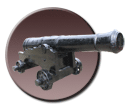 |
Back to Interactive Map |
